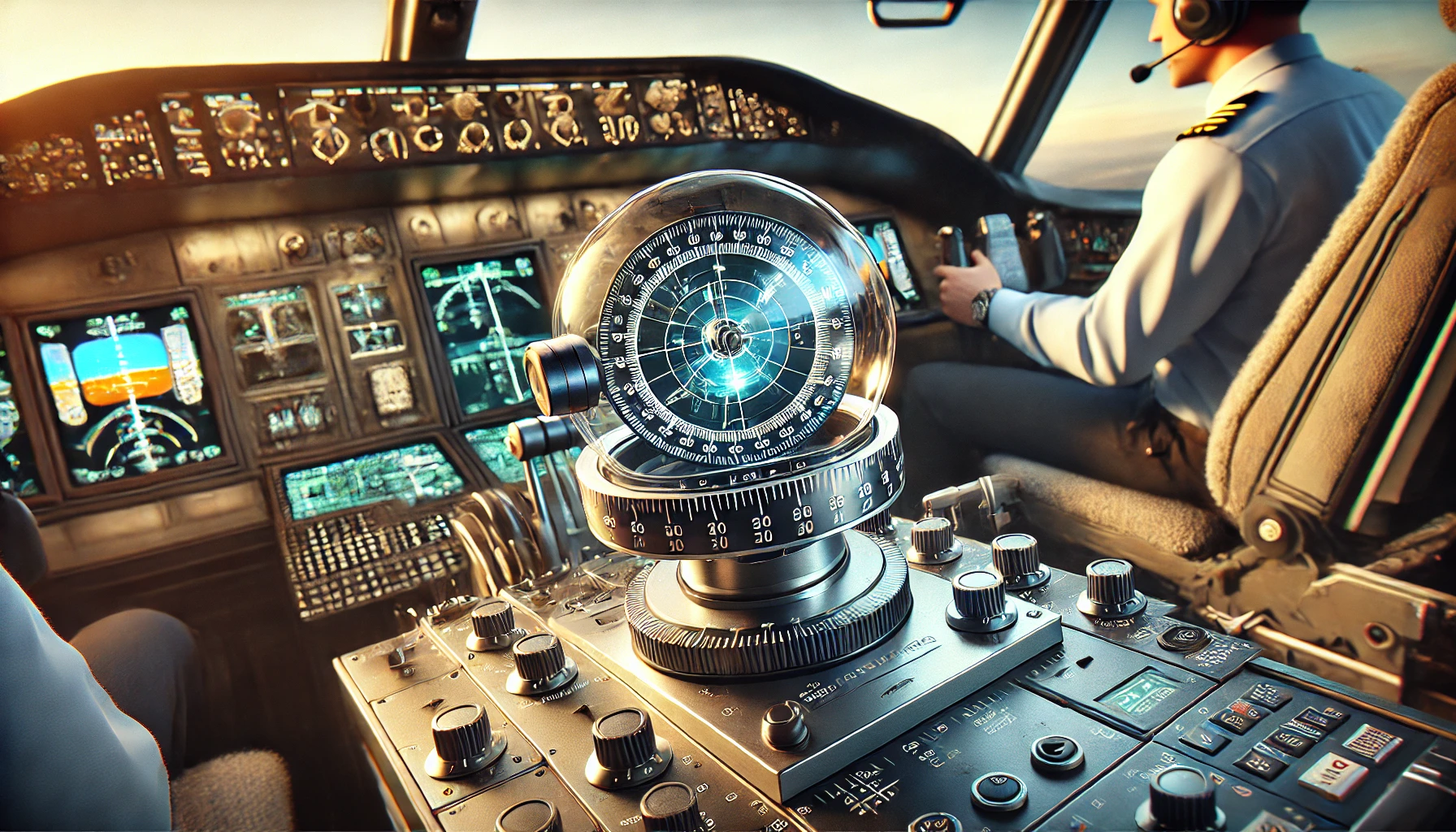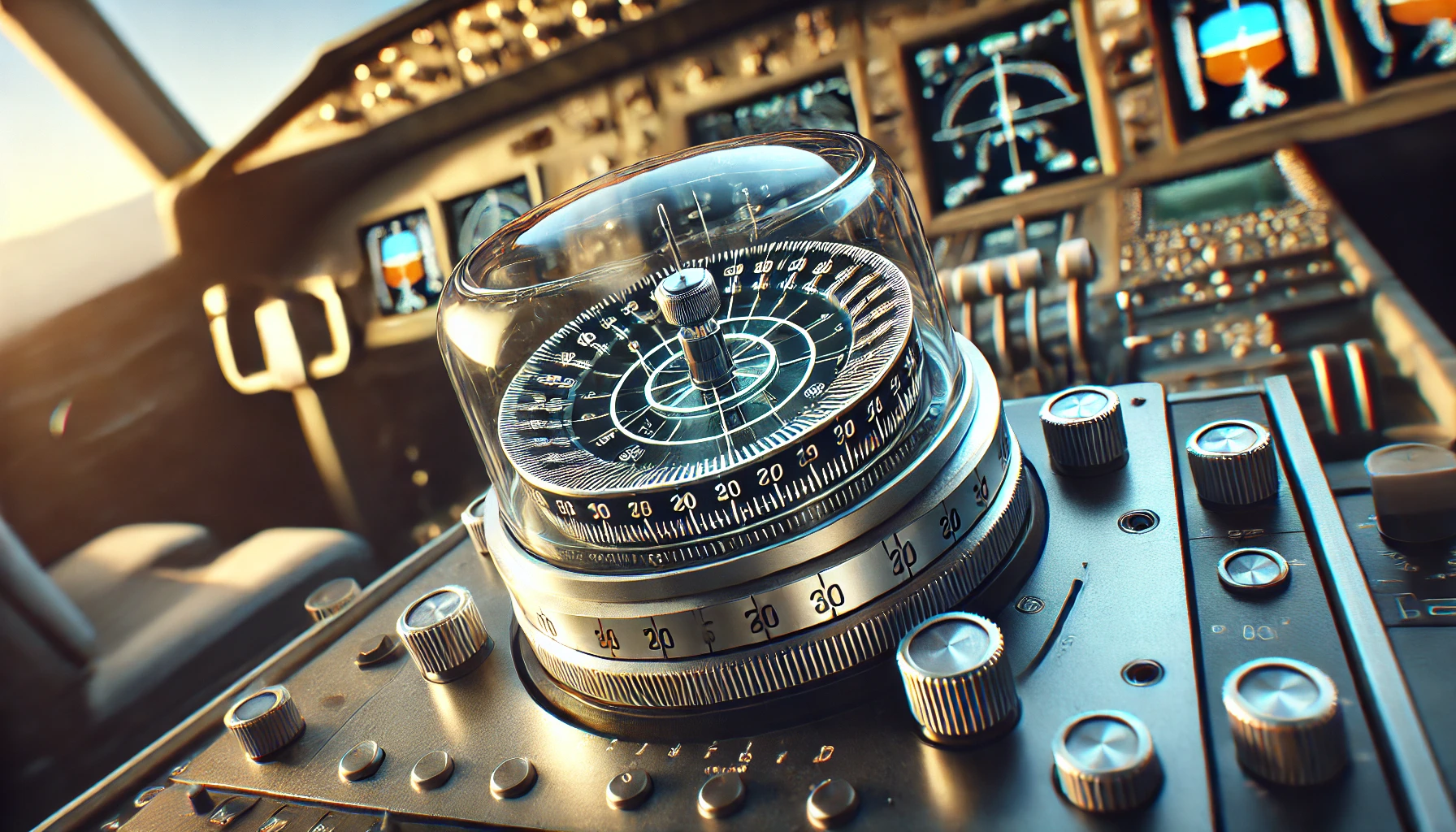In an age where precision and accuracy define the success of our daily endeavors, one unsung hero quietly thrives behind the scenes—gyroscopic instruments. Originally crafted for the soaring heights of aviation, these clever devices have since taken flight into a kaleidoscope of applications that touch nearly every aspect of modern life.
From guiding airplanes through turbulent skies to ensuring your smartphone knows exactly which way is up, gyros are pivotal in navigating our complex world. Join us as we explore their fascinating transformation from cockpit essentials to indispensable tools powering innovative technologies across industries.
Buckle up—it’s time to embark on a thrilling journey through the spin-filled universe of gyroscopes!
Introduction to Gyroscopic Instruments
Picture yourself soaring through the skies, gliding smoothly with unwavering precision. Or imagine a spacecraft navigating the vastness of space with effortless grace. What makes these feats possible? At the heart of it all lies a remarkable invention: gyroscopic instruments. These devices have revolutionized navigation and control in various fields, from aviation to robotics.
In an age where technology is constantly evolving, gyroscopes remain indispensable tools that help maintain stability and direction. Their unique ability to resist changes in orientation has made them crucial for modern navigation systems. Yet many people overlook their impact on our daily lives.
Join us as we explore the fascinating world of gyroscopic instruments—unraveling their history, understanding how they work, and discovering their applications across different domains. Whether you are an aviation enthusiast or just curious about technology’s inner workings, there’s much to learn about these incredible devices that keep us grounded while reaching for the stars!

History and Development of Gyroscopes
The journey of gyroscopes began in the early 19th century. The concept was first introduced by French physicist Léon Foucault in 1852, showcasing its ability to demonstrate Earth’s rotation. His innovative experiments captured the imagination of many.
As technology advanced, so did the design and application of gyroscopic instruments. By the late 1800s, inventors started integrating gyroscopes into navigation systems for ships and aircraft. This marked a significant shift in how we approached movement and orientation.
World War II accelerated gyroscope development. Engineers realized their potential for stabilizing aircraft during flight amidst turbulent conditions. Post-war advancements led to compact designs suitable for various technologies.
Today’s modern gyroscopes are often microelectromechanical systems (MEMS), allowing integration into smartphones and drones. Their evolution continues as researchers seek ways to enhance precision and functionality across diverse fields.
How Gyroscopes Work – Inertia, Precession, and Rigidity
Gyroscopes operate on three fundamental principles: inertia, precession, and rigidity. Inertia refers to an object’s resistance to changes in its state of motion. This property allows gyroscopic instruments to maintain a steady orientation as they spin.
When a force is applied to change the direction of a spinning gyroscope, it doesn’t respond immediately. Instead, it reacts at right angles to the applied force—a phenomenon known as precession. This unique behavior enables accurate measurements of angular momentum and stability.
Rigidity in space also plays a pivotal role. A spinning gyroscope remains rigidly aligned with its initial axis due to this principle. As long as it’s rotating rapidly enough, external forces like gravity or movement won’t easily disrupt its position.
These characteristics make gyroscopes invaluable tools across various applications—from aviation navigation systems to advanced robotics—demonstrating their remarkable versatility and reliability in technology today.
The Importance of Gyroscopic Instruments in Aviation
Gyroscopic instruments play a critical role in aviation, ensuring safety and precision. They provide pilots with essential information about aircraft orientation and movement.
Navigation systems rely heavily on gyroscopes for accurate heading data. This technology helps pilots maintain course during challenging conditions, like low visibility or turbulence.
Stability and control mechanisms also benefit from gyroscopic instrumentation. These devices help counteract unwanted movements, allowing for smoother flights even in adverse weather.
Attitude indicators are crucial tools that display an aircraft’s position relative to the horizon. Pilots depend on this information to stay aware of their flight path, especially during complex maneuvers.
Overall, these instruments enhance situational awareness in the cockpit. By integrating gyroscopic technology into various aviation systems, we achieve safer skies for everyone involved in air travel.
Gyroscopic instruments play a crucial role in navigation systems, especially in aviation. They provide precise orientation and stability, ensuring that pilots can maintain accurate course headings even amid turbulent conditions.
These instruments utilize the principles of angular momentum to resist changes in their axis of rotation. This property allows them to deliver reliable data regarding pitch, roll, and yaw angles.
Modern aircraft rely on gyroscopes for inertial navigation systems (INS). These systems calculate position based on speed and direction over time without external references. This capability is particularly beneficial during poor visibility or when GPS signals are weak or unavailable.
In marine navigation as well, gyroscopic technology aids vessels in maintaining steady courses across vast oceans. The integration of these devices enhances safety by preventing navigational errors caused by environmental factors such as waves and wind.
Stability and Control Systems
Stability and control systems are essential for maintaining the balance of aircraft during flight. Gyroscopic instruments play a pivotal role in this process. They help pilots understand how their aircraft is positioned relative to its intended path.
When an airplane experiences turbulence, gyroscopes provide real-time data on orientation. This feedback allows pilots to make quick adjustments, ensuring smoother flights. The precision offered by these instruments can mean the difference between a safe landing and an uncontrolled descent.
In modern aviation, autopilot systems utilize gyroscopic inputs to maintain stability without constant pilot intervention. These advanced technologies rely on accurate readings from gyroscopes to keep planes flying straight and level.
As technology evolves, so does the integration of gyroscopic instruments into sophisticated flight management systems. This evolution enhances safety while allowing pilots to focus more on navigation rather than merely controlling the aircraft’s position in space.
Attitude Indicators
Attitude indicators are essential gyroscopic instruments in aviation. They provide pilots with crucial information about an aircraft’s orientation relative to the horizon. This data is vital for maintaining level flight and ensuring safe navigation.
These instruments display the aircraft’s pitch and roll movements. A small airplane-shaped symbol on the indicator moves against a background that represents the horizon. When flying through clouds or during nighttime, visibility can be limited, making attitude indicators indispensable.
The technology behind these devices has evolved significantly over time. Traditional mechanical systems have given way to digital displays that offer greater accuracy and reliability.
In challenging weather conditions, having a precise understanding of an aircraft’s attitude prevents spatial disorientation for pilots. Ultimately, attitude indicators play a crucial role in enhancing safety during flight operations across various environments.
Application in Modern Technology
Gyroscopic instruments play a critical role in modern technology beyond aviation. In marine navigation, they provide essential data for ships and submarines, ensuring safe maneuvering through challenging waters. These instruments enhance accuracy by stabilizing the vessel’s point of reference.
In spacecraft, gyroscopes are indispensable. They help maintain orientation during launch and re-entry phases. This precision is vital for trajectory adjustments and docking maneuvers in space.
Robotics also benefits from gyroscopic technology. Robots equipped with these instruments can navigate complex environments with improved stability and balance. This capability allows them to perform intricate tasks in manufacturing or exploration missions.
Whether on Earth or in space, gyroscopic instruments continue to be integral components that push the boundaries of our technological advancements.
Marine navigation relies heavily on gyroscopic instruments to ensure safe and accurate voyages across vast oceans. These devices serve as critical components in determining a vessel’s orientation, helping mariners maintain their course amidst unpredictable sea conditions.
Gyroscopic compasses are particularly essential in maritime settings. Unlike magnetic compasses, they are unaffected by the Earth’s magnetic field, providing true north at all times. This reliability is crucial for long-distance travel where traditional methods may falter.
Additionally, gyro-stabilizers enhance stability during rough waters. By counteracting the forces that cause swaying and rolling, these instruments provide smooth sailing experiences—vital for both crew safety and passenger comfort.
As technology evolves, advancements in gyroscope systems promise even greater accuracy and efficiency in marine navigation. The integration of digital interfaces with traditional gyroscopic tools paves the way for smarter navigational strategies on modern ships.
Spacecrafts
Gyroscopic instruments play a crucial role in the realm of spacecraft navigation and control. These devices help maintain orientation in the vastness of space, where traditional references like the horizon are absent.
In orbit, gyroscopes ensure that spacecraft can accurately determine their position and attitude. This is vital for maneuvers such as docking with other vehicles or adjusting trajectories for interplanetary travel.
Advanced gyroscopic systems are integrated into Inertial Measurement Units (IMUs), which track movement and change in orientation without needing external signals. This self-reliance is essential during deep-space missions where communication delays occur.
Additionally, gyroscopes contribute to stability during turbulent phases of flight, ensuring that craft remain steady even when faced with unpredictable forces. As humanity ventures further into space, the reliance on precise gyroscopic technology will only grow stronger.
Robotics
Robotics has revolutionized various industries, and gyroscopic instruments play a vital role in enhancing the capabilities of these machines. From autonomous drones to industrial robots, these devices rely on precise orientation and balance.
Gyroscopes provide essential data that helps robots navigate complex environments. They ensure stability while moving or performing intricate tasks, such as assembly lines or surgical procedures. This accuracy is crucial for maintaining efficiency and safety.
Moreover, gyroscopic instruments contribute to the development of advanced robotic systems equipped with artificial intelligence. These systems can adapt to changes in their surroundings by utilizing real-time feedback from gyroscopes.
As robotics continues to evolve, integrating more sophisticated gyroscopic technology will likely lead to even greater advancements. Enhanced motion control and improved spatial awareness are just a couple of benefits we can expect in future robotic applications.
Advantages and Limitations of Gyroscopic Instruments
Gyroscopic instruments offer several advantages that make them essential in various fields. Their ability to maintain orientation provides stability during navigation, allowing for accurate positioning and control. This is particularly beneficial in aviation, where precision is crucial. They can function effectively regardless of external conditions, making them reliable tools.
However, these instruments are not without limitations. They can be affected by environmental factors such as temperature changes or vibrations. Additionally, the mechanical components may experience wear over time, leading to inaccuracies.
Cost is another consideration; high-quality gyroscopes can be expensive to produce and maintain. Their complexity requires specialized knowledge for installation and calibration.
Despite these challenges, the benefits of gyroscopic instruments continue to outweigh their disadvantages in many applications across technology sectors.
Future Developments and Innovations in Gyroscopy
The future of gyroscopic instruments holds exciting potential. Innovations in materials science may lead to lighter, more sensitive gyroscopes. These advancements could enhance precision across various applications.
Miniaturization is another trend on the rise. As technology shrinks, we can expect even smaller gyroscopes that fit into smartphones and wearables without sacrificing performance. This opens new doors for personal navigation and augmented reality experiences.
Moreover, artificial intelligence integration offers a fascinating avenue for development. By combining AI with gyroscopic data, systems could adapt more intelligently to changing environments and improve stability measures in real-time.
As researchers explore quantum technologies, the concept of quantum gyroscopes emerges as well. These devices promise unprecedented levels of accuracy by exploiting quantum mechanics principles.
Each breakthrough pushes gyro technology further into our daily lives, affecting everything from transportation safety to virtual reality experiences. The future looks bright for this essential instrument!
Conclusion: The Enduring Impact of Gyroscopic Instruments on Modern Technology
Gyroscopic instruments have firmly established themselves as essential components across various fields. Their ability to maintain orientation and stability has transformed navigation, whether in the air, at sea, or in space.
In aviation, they enhance safety and operational efficiency through reliable navigation systems and attitude indicators. On ships, gyroscopes ensure precise steering even under challenging conditions. They also play a pivotal role in spacecraft guidance, facilitating exploration beyond our planet.
Emerging technologies like robotics are integrating gyroscopic principles for improved motion control and stability. As industries continue to innovate, the applications of these instruments are likely to expand further.
While there are limitations associated with traditional gyroscopes—such as size and weight—the ongoing research promises advancements that could mitigate these issues. The future may bring lighter materials or enhanced digital solutions that improve their functionality even more.
The impact of gyroscopic instruments on modern technology is profound. These tools not only contribute to safer travel but also enable groundbreaking explorations into unknown territories. Their legacy will undoubtedly shape how we navigate both our world and beyond for generations to come.




